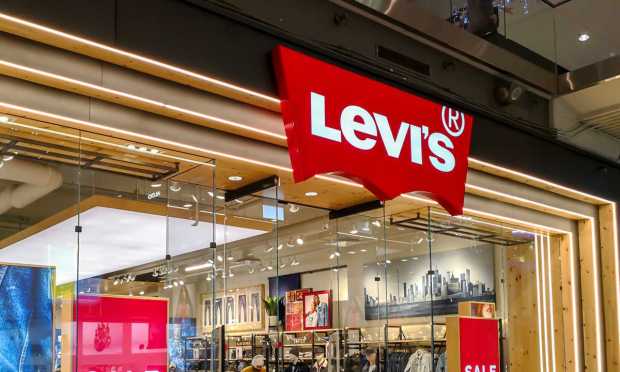Levi Strauss Earnings Reflect Focus on Digital and New Concept Stores

Denim may never go out of style but how and where we buy out is a process in flux.
As evidenced by the world’s leading wholesaler and retailer of jeans, and related apparel and accessories, that process is getting back into full swing after a year of headwinds and challenges.
“We continue to diversify our business as nearly 40% of our revenues came from outside of denim bottoms,” Levi Strauss & Co. President and CEO Chip Bergh told analysts on the company’s Q4 earnings call held Wednesday (Jan 25) evening, while pointing to outsized growth in women’s, tops, D2C and international.
The 170-year-old San Francisco-based brand also talked-up its “next gen” concept store expansion plans as well as the hiring of a new chief digital officer to boost online sales, which the retailer said saw D2C stores and eCommerce accounting for 31% and 8% of total revenues respectively, with digital revenue off by 7% in Q4 versus a year ago and accounting for 20% of total sales.
At the same time, Levi’s massive wholesale business saw an 8% decline in sales, which was impacted by the closing of Russian operations and the strong dollar.
“We made excellent progress in growing our global DTC business, which was up 18% for the year, driven by a 19% increase in our owned and operated stores and a high-single-digit increase in e-commerce,” Bergh said.
In total, Levi’s opened 11 mainline stores in the U.S. in Q4 for a total of 66 domestic mainline locations, while 136 stores in its “next gen” portfolio were opened worldwide, set apart with digital features like its Fit Camp system that scans inventory and informs shoppers what’s available on shelves, as well as its Tailor Shop concept that customizes and personalizes jeans.
The brand plans to open its next mainline locations this year in Nashville, Honolulu, and Miami, among other sites planned. The first two Beyond Yoga locations opened in Q4, with Bergh saying it’s “giving the brand an opportunity to showcase its full category offering. Approximately 50% of their sales are from customers new to the brand, and we believe brick-and-mortar will be a powerful catalyst for the brand.”
See also: Levi’s ‘Beyond Yoga’ D2C Opens 1st Physical Store
The company increased engagement, with Bergh noting that “we grew our base of loyalty consumers to nearly 23 million, representing an almost 50% increase over last year. And our app is now up in 18 countries across the U.S., Europe, and India. As we look to the year ahead, we’re investing in capabilities and talent to drive sustainable profitable long-term growth in our digital business.”
Online sales declined 7% year-over-year, which Bergh attributed to a rise in in-store shopping that was seen across the retail spectrum during 2022.
Addressing the need to beef up digital, Levi’s announced hiring former Nordstrom senior VP of digital Jason Gowans as its new chief digital officer. Gowans will focus on bringing together Levi’s engineering data, artificial intelligence (AI), and digital product management to spearhead the company’s eCommerce and digital go-to-market efforts.
See also: Levi’s NextGen Concept Will Lead Store Openings
Chief Financial and Growth Officer Harmit Singh said that in Q4, “despite consumers returning to our stores in large numbers, our e-commerce business grew 5%,” but stayed with the store theme saying, “In the U.S., we plan to open around 15 full-priced Levi’s NextGen doors in 2023, taking our mainline door count to approximately 80 by the end of the year as we progress towards the goal of opening 100 full price doors in the U.S.”
Levi’s also upgraded its Enterprise Resource Planning (ERP) system, sunsetting a legacy system in late 2022.
About that, Singh said, “It’s really access to data and data on a real-time basis. So, our commercial people, our operations people get access to data, and they can then leverage the data to actually drive business. I haven’t modeled all that in our algorithm, but those are the benefits we are really seeing. Inventory management gets a lot better and handling direct-to-consumer gets a lot better.”
